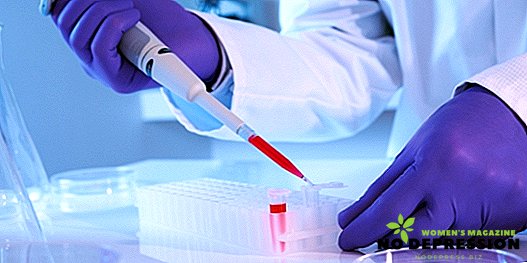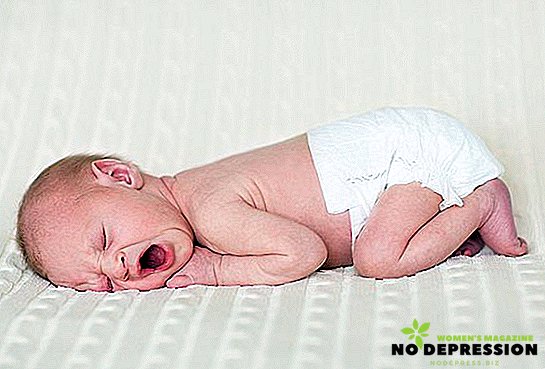Polyps in the uterus are not uncommon pathologies among women of all ages. What danger do they pose? Can I get pregnant if there is a polyp in the uterus? What are the current methods of treatment?

What is it, what is the danger?
A polyp in the uterus is a pathological outgrowth over the endometrium. The endometrium is the inner layer of the uterus. Polyps in the uterus are:
- Ferrous;
- Fibrous;
- Glandular fibrous.
The glandular polyp comes from the tissues of the glands; it is usually found in the reproductive age. At the heart of fibrous is connective tissue, detected in women post-menopausal period. Glandular fibrous has a mixed structure.
Why polyps in the uterus should not be left without proper treatment?
- the probability of its transformation into a malignant neoplasm;
- infertility;
- miscarriage;
- development of anemia.

Symptoms of polyps in the uterus
The clinical picture of polyps in the uterus directly depends on their number and size. A fairly small education usually does not give the woman any discomfort, is found during the inspection.
Large polyps can occur:
- Bleeding from the uterus between menstruation;
- Copious menstruation;
- Anemia;
- The appearance of bleeding after intercourse;
- Pain syndrome;
- Infertility;
- The appearance of uterine bleeding in menopausal age.

Causes of
Science cannot yet answer the question exactly: why do polyps appear in the uterus? However, scientists have put forward many theories on this subject. The most popular of them received the theory of hormonal imbalance of estrogen and progesterone.
Due to changes in hormonal levels, cyclic processes in the endometrium are disturbed, and a polyp is formed.
Also, the appearance of polyps in the uterus is associated with:
- endometriosis;
- infections that have sexual transmission;
- erosion;
- injuries;
- metabolic disorders;
- reduced immunity;
- abortions;
- intrauterine device.
Diagnostic methods
The main diagnostic methods include:
- Clinical;
- Ultrasound;
- Hysteroscopy.

If the polyp in the uterus is large, then a specialist with a special gynecological examination can detect it. Small education more often detected by ultrasound of the pelvic organs and hysteroscopy.
Ultrasound is an instrumental diagnostic method. It is performed using two sensors - transabdominal and transvaginal.
Examination of the uterus with a transabdominal probe should be performed on the full bladder. In the case of transvaginal, on the contrary, to be emptied. With the help of ultrasound, a polyp can be detected as small as two and a half cm.
Hysteroscopy is more reliable in the diagnostic plan. With it, you can visualize even the smallest formations. Hysteroscopy belongs to optical research methods. The procedure can not only research, but also therapeutic.
Indirectly, a polyp can be judged by a blood test.
Treatment without surgery
Since in most cases polyps in the uterus are the result of a violation of the ratio of progesterone and estrogen, a conservative treatment is aimed at restoring it.
The specialist prescribes a course of treatment with hormonal drugs, most often progesterone. Periodic efficacy monitoring is performed using ultrasound.
For whom is conservative treatment indicated?
- Women with small polyps;
- If there are contraindications to surgical intervention;
- Refusal of patients from surgery.
It is worth noting that surgical and conservative treatment methods are usually combined to get the best result.
Treatment of folk remedies
Treatment with medicinal plants is acceptable at an early stage of the disease. Before embarking on herbal medicine, it is imperative to consult with a gynecologist.
On the good side in the treatment of uterine polyps, celandine has established itself.
Since the plant has toxic properties, it is necessary to strictly observe its dosage.
For the preparation of therapeutic infusion should be one cup of crushed celandine pour two liters of boiling water. It is advisable to pour the grass in a thermos. If this is not possible, wrap the dishes in a towel. You need to insist ten hours, then strain and pour into a jar. In the subsequent infusion to store in the refrigerator.

How to take celandine infusion
During the first week, take an infusion in the amount of half a teaspoon in the morning. The second week is one teaspoon, the third week is one tablespoon, the fourth week is two tablespoons.
Then in the same order, reduce the dose to one teaspoon. If you need to repeat the treatment, take a break of at least two weeks.
Douching
Douching with an infusion of collecting medicinal herbs is a local method of influencing pathology. To prepare the infusion will need:
- 100 g yarrow;
- 100 g of oak bark;
- 100 g sage leaves;

- 50 g of rhizomes;
- 50 g of plantain leaves;
- 50 g Potentilla goose;
- 50 g of chamomile flowers;
- 50 g of calendula flowers.
Before preparing the infusion, all herbs must be mixed. Cook with the calculation of two tablespoons of half a liter of water. It is necessary to boil for three minutes, then strain. The resulting tool is used for douching.
Surgical removal
Removal of uterine polyps using hysteroscopy is the most modern and safe method of surgical treatment. What are the advantages of this method?
- minimally invasive intervention;
- quick recovery after surgery;
- high efficiency.
Removal of polyps occurs after menstruation. It is necessary to take into account, if more than ten days of the menstrual cycle have passed, surgical intervention is postponed. On the eve of hysteroscopy, eating is prohibited (as prevention of vomiting).
 Removal of polyps in this way is carried out under anesthesia. A hysteroscope is inserted into the uterine cavity, which is a thin tube with a video camera at the end. With the help of a video camera, the image is transmitted to the monitor.
Removal of polyps in this way is carried out under anesthesia. A hysteroscope is inserted into the uterine cavity, which is a thin tube with a video camera at the end. With the help of a video camera, the image is transmitted to the monitor.
The doctor examines the uterine cavity, determines the number, location and size of formations. A special instrument makes the removal of polyps with their histological examination.
The last item is performed without fail, since it is necessary to exclude a malignant tissue degeneration.
The polyp on the leg is removed by the method of "unscrewing", its bed is processed using electrocoagulation (stop bleeding).
Such a criterion as the duration of the operation depends on the characteristics of the formations and the endometrium. It usually ranges from ten to thirty minutes.
Removal of polyps by diagnostic curettage
This method is less preferable than the previous one. So it is carried out without visual control and is associated with greater trauma to the endometrium.

Separate diagnostic curettage (RFD) is performed in the presence of abundant uterine bleeding. This procedure prevents excessive blood loss.
The procedure is performed under general anesthesia. Different curettes doctor makes scraping from the cervical canal and uterine cavity. Then the tissue is also sent for histological examination.
After the curettage, recurrences of polyps often occur. In this regard, experts subsequently recommend a woman to undergo hysteroscopy.
Depending on the results of the laboratory examination of the obtained tissue samples, the patient is prescribed treatment with hormonal drugs (glandular polyp) or dynamic observation by a gynecologist (fibrous polyp).
Possible complications
The most common postoperative complications:
- inflammatory;
- perforation (puncture of the uterine wall);
- accumulation of blood in the uterine cavity (hematometer);
The inflammatory process after the removal of polyps in the uterus may occur if the intervention was carried out against the background of an untreated infection (including latent infection), violations of the rules of asepsis, and failure to observe hygiene of the genital organs after surgery.
In the case of endometritis (inflammation of the uterus), an increase in body temperature, deterioration of the patient's well-being, pain in the lower abdomen, changes in blood tests are observed. Well-chosen antibiotic therapy is the basis for the treatment of endometritis.

Puncture of the uterine wall (perforation) is most often observed when the walls of the organ are loose, and the cervical canal is not sufficiently dilated. Large holes must be closed, small-diameter perforations grow independently.
Accumulation of blood in the uterus occurs due to spasm of the cervix. Manifested by hematometer abrupt termination of vaginal discharge in the postoperative period and pain. This complication is stopped by taking antispasmodics and anti-inflammatory drugs.
Polyps in the uterus and pregnancy
The possibility of becoming pregnant with a polyp in the uterus is called into question. Fetal egg can not be implanted in the endometrium, and pregnancy does not occur.
If, however, the pregnancy has come, the treatment is postponed until the child is born. While carrying a bloody discharge may occur, but they do not carry a danger. For differential diagnosis, consult a physician.

In the event that education is in the cervical canal, it can be a source of infection. When signs of infection appear, an antibiotic therapy is prescribed to a pregnant woman.
Due to changes in hormonal levels during pregnancy, a relapse may occur (re-formation of polyps).
Prevention
Preventive measures are aimed at the correction of hormonal background, treatment of endocrine and inflammatory diseases. Every woman should undergo regular routine check-ups at the gynecologist.
If you found a polyp in the uterus, do not panic. After surgical treatment, a course of hormonal therapy is prescribed. In case of detection of hidden foci of infection, it is also proposed to undergo treatment aimed at their rehabilitation.
Reviews
At the age of 23, bleeding between periods began to disturb. Prior to this, no problems with the monthly did not arise. I was scared and immediately ran to the gynecologist. She ordered me to have a pelvic ultrasound and blood tests.
The result was a polyp. I was prescribed hormone therapy. Saw pills for six months. At the next examination, there was no polyp. I have been observed for three years, I am planning a pregnancy.
Inga, 26 years old, Kursk
I am 30 years old. Menstruation comes from the age of fifteen. They have always been plentiful and long, but never really drew attention to this. She married at 23, immediately tried to get pregnant. However, nothing came of it. I went to the doctor.
An ultrasound found two polyps in the uterus. Spent their removal by hysteroscopy. After drinking hormones. After about a year and a half, the long-awaited pregnancy began. I was afraid that a relapse would occur during gestation, but everything is fine. Every six months I go through the pelvic ultrasound. I advise anyone not to neglect trips to the gynecologist.
Ekaterina, 30 years old, Vladivostok
I am 32 years old. At 22 found problems with the thyroid gland. At 27 years after intercourse, she began to pay attention to the appearance of bleeding. I went to the doctor. She suggested that this phenomenon may be associated with the formation of a polyp due to changes in hormonal levels. Ultrasound confirmed the presence of formations. The doctor explained that a change in the functioning of the thyroid gland can affect all organs. She proposed to remove the formation using surgery. I refused. After consulting with a specialist, she took an infusion of celandine courses, did douching. Another examination showed a decrease in size of the polyp. I am pleased with the result. Now I will do an examination of the thyroid gland.
Olga, 32 years old, Volgograd
A little more information about polyps in the uterus can be found in the following video.













